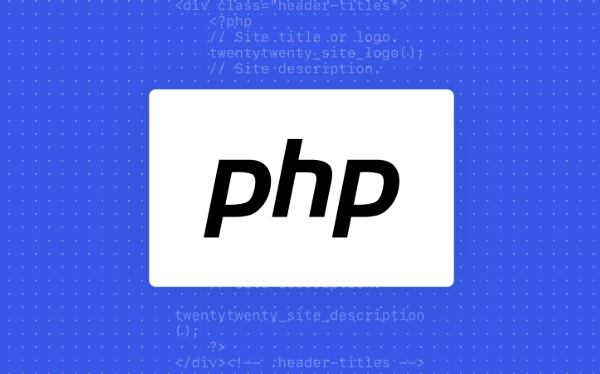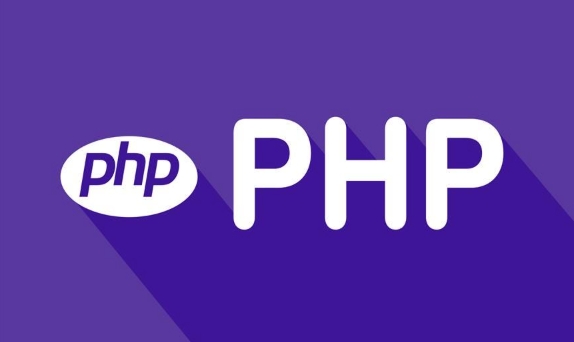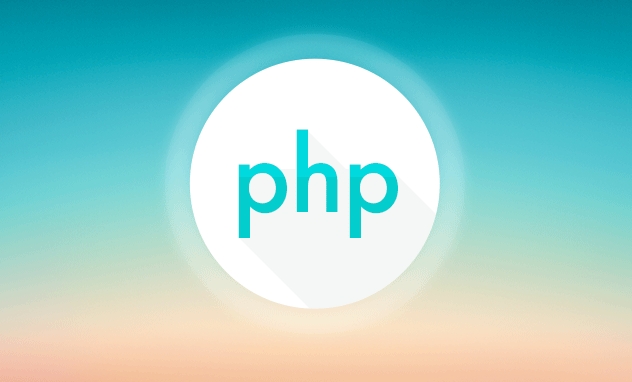Cross-Platform Desktop Applications with PHP-GTK
Jul 25, 2025 pm 05:33 PMYes, cross-platform desktop applications can be built using PHP-GTK in technology, but there are serious limitations: ① Although PHP-GTK supports Windows, Linux and macOS, it can theoretically implement multi-platform operation at one time; ② However, it lacks official support for PHP 8 and the project has not been maintained for a long time; ③ Users need to pre-install PHP and PHP-GTK extensions, resulting in difficulty in distributing applications; ④ UI components and development tools are backward, lacking modern function support; ⑤ Documents are scarce, community activity is low, and development and debugging experience is poor; therefore, actual deployment is almost unfeasible. It is recommended to use modern frameworks such as Electron, Tauri, PyQt, JavaFX, Flutter or .NET MAUI with complete ecosystem and packaging support.

So you're wondering if you can build cross-platform desktop applications using PHP-GTK? The short answer is: yes, technically — but with serious caveats .

PHP-GTK was designed to let PHP, traditionally a server-side web language, create native desktop GUIs using GTK (GIMP Toolkit). It allows you to write desktop apps in PHP that can run on Windows, Linux, and macOS — in theory. But here's what you really need to know before diving in.
What Is PHP-GTK?
PHP-GTK is an extension for PHP that binds the GTK library, enabling developers to create graphic user interfaces using PHP code. It's not part of standard PHP and must be installed separately.

Example of a simple window:
$window = new GtkWindow();
$window->set_title("Hello PHP-GTK");
$window->set_default_size(300, 200);
$window->connect('destroy', function() {
Gtk::main_quit();
});
$window->show_all();
Gtk::main();This looks clean and functional — and it can work across platforms if properly set up.

Can It Be Used for Cross-Platform Desktop Apps?
Yes — but with major limitations.
While PHP-GTK does support Windows, Linux, and macOS, here's the reality:
- ? Cross-platform in theory : Apps can be written once and run on multiple OSes.
- ? Poor ecosystem support : No official packages for modern PHP versions (PHP 8).
- ? No active maintenance : The last stable release was over a decade ago.
- ? Hard to distribute : End users need PHP PHP-GTK extension installed — not feasible for average users.
- ? Limited UI components and tooling : Compared to modern frameworks, it feels outdated.
So while the code might run on different platforms, actually deploying a standalone app is nearly impossible without bundling PHP and GTK — which is complex and rarely done.
Practical Challenges You'll Face
If you're serious about building a real-world desktop app, consider these hurtles:
- No installer support : You can't just give users an
.exeor.dmg. They'd need to install PHP and compile PHP-GTK — not user-friendly. - Performance : PHP isn't optimized for desktop GUIs. Expect slower startup and responsiveness.
- Missing modern features : No built-in support for themes, high-DPI displays, or system tray integration out of the box.
- Lack of documentation and community : Few tutorials, Stack Overflow answers are outdated, and debugging is painful.
Even if you get it working on your machine, distributing it to others is where it falls apart.
Better Alternatives for Cross-Platform Desktop Apps
Instead of PHP-GTK, consider these more practical options:
- Electron / Tauri – Use web tech (HTML/CSS/JS) to build desktop apps. Tauri uses Rust in the backend and is lightweight.
- Qt with Python (PyQt/PySide) – Mature, powerful, and support all platforms with excellent tools.
- JavaFX or Swing (Java/Kotlin) – Write once, run anywhere — with native packaging options.
- Flutter (with desktop support) – Google's UI toolkit now supports desktop apps with great performance.
- .NET MAUI / Avalonia – Great for C# developers wanting cross-platform desktop apps.
These tools have active communities, proper packaging, installers, and deployment workflows.
Bottom Line
PHP-GTK is a technical curiosity — a proof that PHP can do GUIs — but it's not suitable for real-world, distributed cross-platform desktop applications today.
If you're attached to PHP, consider using it as a backend for a desktop app built with Electron or Tauri, where the frontend is in JavaScript/HTML and PHP runs locally as a microserver (eg, via built-in server or SAPI). That's a more realistic and maintained path.
So yes, PHP-GTK exists. But unless you're experimenting or maintaining legacy code, it's best left in the lab.
The above is the detailed content of Cross-Platform Desktop Applications with PHP-GTK. For more information, please follow other related articles on the PHP Chinese website!

Hot AI Tools

Undress AI Tool
Undress images for free

Undresser.AI Undress
AI-powered app for creating realistic nude photos

AI Clothes Remover
Online AI tool for removing clothes from photos.

Clothoff.io
AI clothes remover

Video Face Swap
Swap faces in any video effortlessly with our completely free AI face swap tool!

Hot Article

Hot Tools

Notepad++7.3.1
Easy-to-use and free code editor

SublimeText3 Chinese version
Chinese version, very easy to use

Zend Studio 13.0.1
Powerful PHP integrated development environment

Dreamweaver CS6
Visual web development tools

SublimeText3 Mac version
God-level code editing software (SublimeText3)
 Develop powerful desktop applications with Golang
Mar 19, 2024 pm 05:45 PM
Develop powerful desktop applications with Golang
Mar 19, 2024 pm 05:45 PM
Use Golang to develop powerful desktop applications. With the continuous development of the Internet, people have become inseparable from various types of desktop applications. For developers, it is crucial to use efficient programming languages ??to develop powerful desktop applications. This article will introduce how to use Golang (Go language) to develop powerful desktop applications and provide some specific code examples. Golang is an open source programming language developed by Google. It has the characteristics of simplicity, efficiency, strong concurrency, etc., and is very suitable for
 Golang desktop application development guide
Mar 18, 2024 am 09:45 AM
Golang desktop application development guide
Mar 18, 2024 am 09:45 AM
Golang Desktop Application Development Guide With the popularity of the Internet and the advent of the digital age, desktop applications are playing an increasingly important role in our lives and work. As a powerful programming language, Golang (Go language) is gradually emerging in the field of desktop application development. This article will introduce you to how to use Golang to develop desktop applications and provide specific code examples to help you get started quickly and master development skills. First, we need to understand some basic concepts and tools. In Gol
 A guide to developing desktop applications using Vue.js and C++
Jul 29, 2023 am 09:59 AM
A guide to developing desktop applications using Vue.js and C++
Jul 29, 2023 am 09:59 AM
Guide to developing desktop applications using Vue.js and C++ language. With the development of the Internet, front-end technology is constantly updated and improved. As a lightweight, efficient, and easy-to-use front-end framework, Vue.js has great advantages in developing web applications. However, in some specific scenarios, we may need to develop more complex desktop applications, in which case we need to combine C++ language to implement some underlying functions. This article will introduce how to use Vue.js and C++ language to develop desktop applications, and provide
 Combine NativePHP and Laravel to develop innovative desktop applications
Dec 20, 2023 pm 03:06 PM
Combine NativePHP and Laravel to develop innovative desktop applications
Dec 20, 2023 pm 03:06 PM
Use NativePHP to integrate with Laravel to develop innovative desktop applications. In the field of modern software development, Laravel is a very popular PHP framework that has received widespread attention for its easy-to-use, scalable and efficient features. However, in some specific projects, we may need to combine Laravel with NativePHP to implement innovative desktop applications. In this article, we will explore how to use NativePHP to integrate with Laravel
 The pros and cons of developing desktop applications in Golang
Apr 08, 2024 pm 03:42 PM
The pros and cons of developing desktop applications in Golang
Apr 08, 2024 pm 03:42 PM
The advantages of using Go language in cross-platform desktop development include: cross-platform, efficiency, concurrency, and powerful standard library. The disadvantages are: GUI limitations, weak native IDE support, and high resource consumption. If you consider developing a cross-platform text editor, you can use the Go standard library to handle file I/O and text formatting, and use third-party libraries to create cross-platform interfaces.
 Golang's approach to implementing cross-platform desktop applications
Mar 20, 2024 am 11:39 AM
Golang's approach to implementing cross-platform desktop applications
Mar 20, 2024 am 11:39 AM
Golang (also known as Go language) is an open source programming language developed by Google. It is increasingly popular among developers through its simplicity, efficiency and powerful features. When implementing cross-platform desktop applications, Golang also provides some powerful tools and libraries to make development easier and more efficient. This article will introduce how to use Golang to implement cross-platform desktop applications and provide specific code examples for reference. 1. Use fyne library to create cross-platform GUI applications in Golang, one
 What is the best way to develop desktop applications using Python?
Sep 11, 2023 am 11:05 AM
What is the best way to develop desktop applications using Python?
Sep 11, 2023 am 11:05 AM
Python is a versatile programming language that can be used for a variety of tasks, including web development, data analysis, and machine learning. One of its biggest advantages is that it can also be used to create desktop applications. In this article, we’ll dive into the best practices for developing desktop applications using Python. When developing desktop applications with Python, the first step is to choose the right framework. There are various options available such as Kivy, Tkinter, PyQt, PyGTK and wxPython. Each framework has its unique features and limitations, so it's important to choose the one that best suits your project needs. The Chinese translation of framework Kivy is: KivyKivy is an open source Python library that can be used to create
 Yii2 vs Kohana: Which framework is better for building high-performance desktop applications?
Jun 18, 2023 pm 10:12 PM
Yii2 vs Kohana: Which framework is better for building high-performance desktop applications?
Jun 18, 2023 pm 10:12 PM
In today's Internet era, desktop applications have been slowly replaced by web applications. However, there are still many businesses and individuals who need to use desktop applications. So, when you choose a framework for building high-performance desktop applications, which framework should you choose? This article will explore Yii2 and Kohana, two frameworks to help you make better decisions. Yii2 and Kohana are both open source frameworks based on the PHP language. Yii2 is a high-performance web application development framework that provides comprehensive architecture and support






